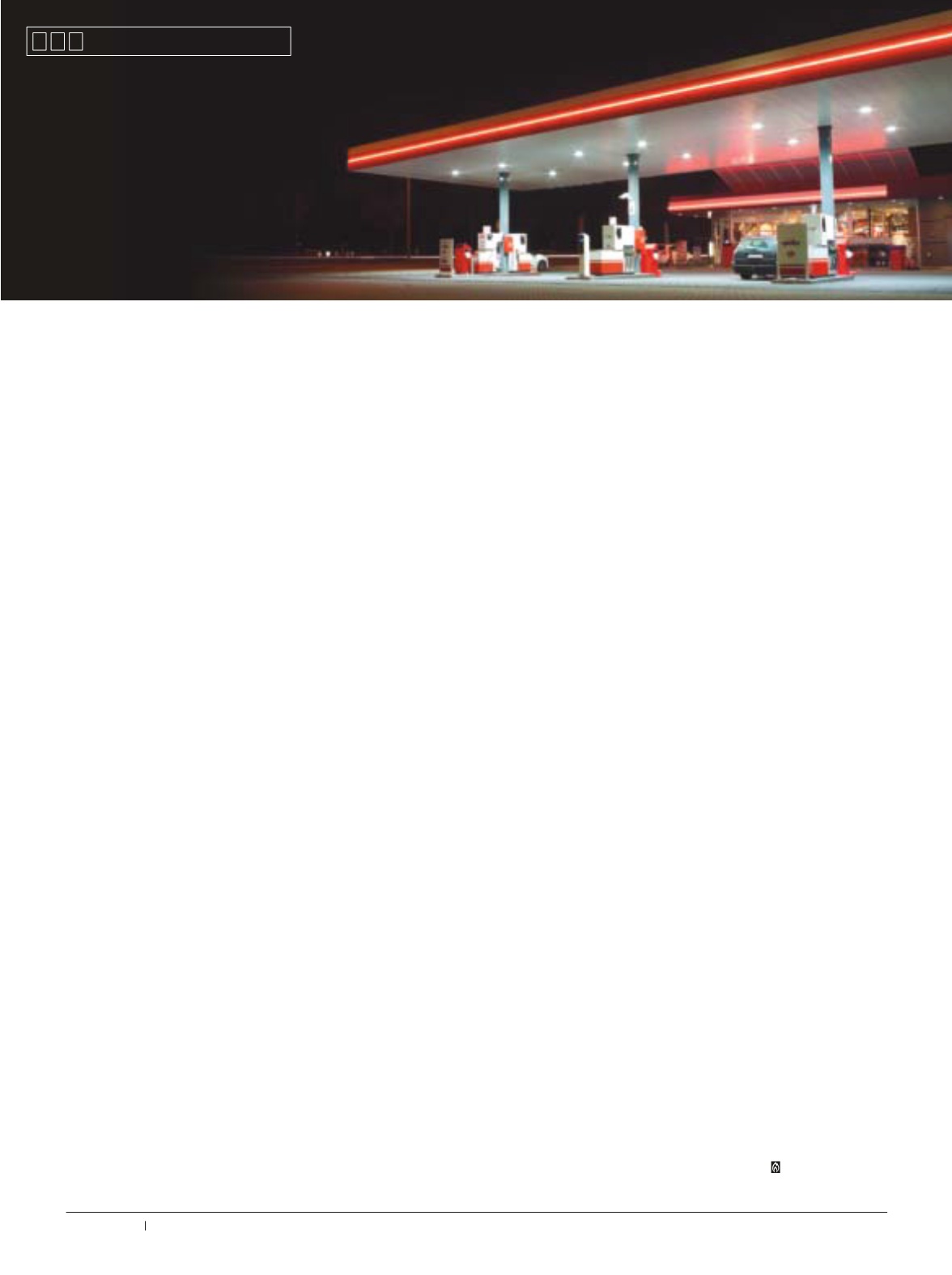
24 • OIL
&
ENERGY
Environmental Regulations
States Move Quickly
to Decommission
Stage II Vapor
Recovery Systems
By John Myers, Husky Corp.
STATES ACROSS THE COUNTRY HAVE TAKEN
a wide variety of paths in deciding what to
do with Stage II vapor recovery systems.
In the Northeast, the pace of activity is
certainly picking up. One state has virtually
completed the task, while others have set
targets in the near future to permit removal
of what many believe are obsolete systems
that are an expensive burden for gasoline
dispensing facilities.
Just a year ago the U.S. Environmental
Protection Agency (EPA) waived its Stage II
implementation requirements in current or
former ozone non-attainment areas classi-
fied as “Serious” or above. EPA found vapor
recovery at the nozzle is “increasingly less
cost-effective” than what is being achieved
byonboardrefuelingvaporrecovery(ORVR)
systems, which the agency determined to be
widespread in the highway fleet.
The 40 areas affected are deciding how
and when to allow Stage II systems to be
decommissioned, provided ozone air quality
standards are unaffected.
JUMPING AT THE OPPORTUNITY
“Many of our customers throughout
New England have been jumping at the
opportunity to decommission their Stage
II systems,” said Burnie Gaff, President
and CEO of Gaftek, one of New England’s
largest petroleum installation contractors
and service providers.
Even the EPA noted Stage II systems
are expensive, estimating the national cost
savings for facilities that decommission to
be more than $91 million. The hanging
hardware alone can cost up to three times
more than conventional components. The
bulky nature of the nozzles makes them
more cumbersome for customers when
refueling. Stage II systems are simply more
complex and prone to failure.
“A typical vacuum assist system can
contain two vacuum motors, two electronic
control boards, multiple piping runs, and
several feet of wiring in each dispenser. Not
only do these components increase the fre-
quency of service calls, they make servicing
these units considerably more expensive,’
Gaff said. “And if Stage II testing is due,
decommissioning is an even more attractive
option since the cost of the Stage II tests can
easily exceed $1,500 per location.”
Regulatory agencies in the New England
states have been among the more respon-
sive in assembling action plans to tackle the
situation.
Connecticut:
A draft report from the
Department of Energy and Environmental
Protection calls for Stage II decommis-
sioning prior to 2015. The draft also
indicated continued use of Stage II systems
would increase volatile organic compound
and toxic air pollutant emissions.
Maine:
The Department of Environ-
mental Protection said only two stations
did not meet the January 1, 2013 require-
ment to sunset or dismantle their Stage II
systems. Those two will be completed by
summer 2013.
Massachusetts:
StageIIrequirementsdo
not apply to new or modified facilities. The
Department of Environmental Protection is
assessing Stage II overall with a draft report
expected for review in summer 2013.
New Hampshire:
The Department of
Environmental Services requires all existing
Stage II systems to be removed no later than
December 22, 2015
Rhode Island:
Stations that excavate
and expose vapor lines, as well as stations
that replace 50 percent or more of their dis-
pensers, can apply for an exemption from
Stage II requirements. The Department
of Environmental Management said final
vapor recovery regulation changes should
be in place within the next year.
Vermont:
The Agency of Natural
Resources repealed Stage II requirements
as of January 1, 2013 and set January 1,
2015 as the date for decommissioning to be
completed.
PROACTIVE REPLACEMENT
“Since approval will be needed to
decommission Stage II systems, it’s a good
idea for fuel marketers to be proactive in
planning to replace them,” said Brad Baker,
Executive Vice President at Husky Corp.
“For example when a pump goes down in a
Vacuum Assist system, rather than replace
an expensive pump it would be a good time
to apply to phase out the Stage II system
instead.”
Stations need to follow the applicable
steps for decommissioning established by
the Petroleum Equipment Institute. That
includes properly shutting down the Stage
II equipment that collected gas vapor and
transferred it to the underground storage
tank. The procedure generally involves
capping off and disconnecting various Stage
II components but leaves the below-grade
Stage II vapor piping in place. All Stage II
hanging hardware must be replaced with
conventional hardware.
“Decommissioning a site can typically
take one to two days with intermittent down
time involved for testing. The electronics are
disconnected and reprogrammed while all
of the existing hanging hardware is removed
and replaced with conventional equipment.
Husky provides a nice solution that includes
an adapter to convert from Stage II to con-
ventional equipment,” Gaff said.
COPING WITH NEGATIVE PRESSURE
One consequence of decommissioning a
vacuum assist Stage II system may be that
the Underground Storage Tank (UST) is
under negative pressure. That is because the
vacuum assist pump is no longer returning
gas vapor or air to the UST during refueling,
which produced pressure equilibrium in the
tank. Some customers who have accessed a
UST with negative pressure notice air being
sucked into the tank. A good solution is
using a properly certified UST pressure/
vacuum vent valve, like a Husky P/V Model
5885 that will allow proper air flow in the
tank so pressure is equalized.
In all cases it is advisable to know your
state’s regulations when approaching a
decommissioning decision. The regulatory
authorities are certain to be monitoring the
process quite carefully.


